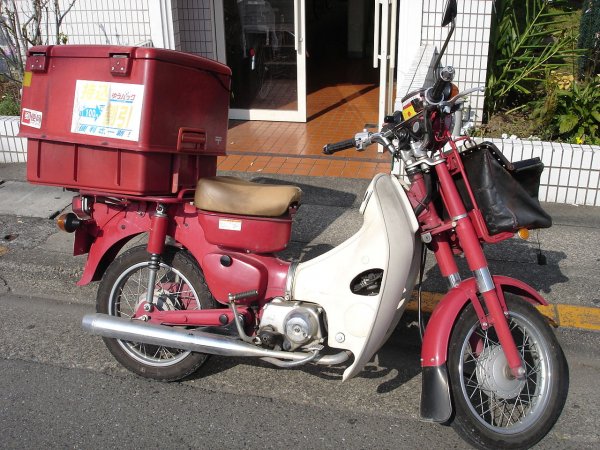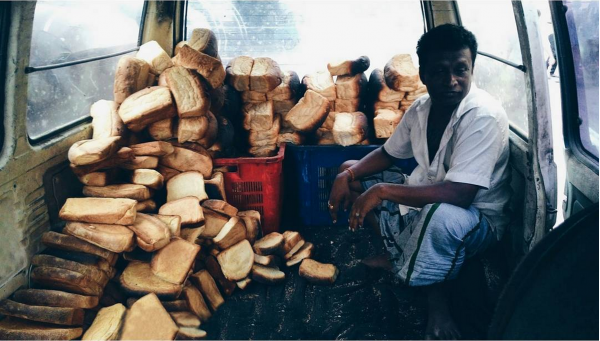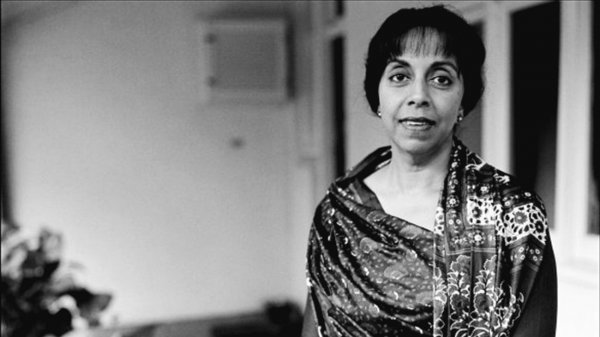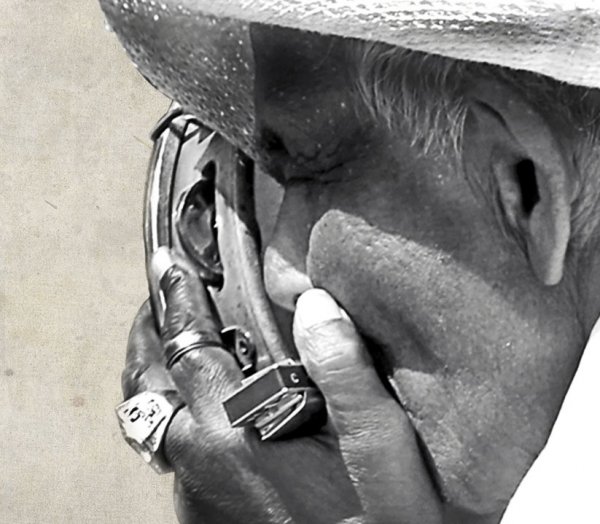
“It’s the uniqueness of every piece you create,” Kyle Sampath-Valentine said, about why he chose to become a tattoo artist. “You’re constantly learning new things, and even if you get the same design, it’s never going to be the same tattoo.” Tattoos are a popular form of expression, and there is an ever-increasing demand for tattooists, but little standardised infrastructure to train them. Aspiring artists depend on an apprenticeships system to develop their style and to acquaint themselves with the tattoo machine. These systems of mentor and student can sometimes take years to develop, but they are important for an industry that receives little official recognition.
Apprenticeships typically involve hands-on experience at the tattoo parlour, and focus on more than just inking skin. New recruits are exposed to the duller and less-artistic sides of tattooing: business skills,such as keeping a clean shop, keeping finance books in order, and staying competitive with other studios. In an industry like tattooing, there is a balance that needs to be maintained between artistry and making a living — apprenticeships try to teach students the ins and outs of both.
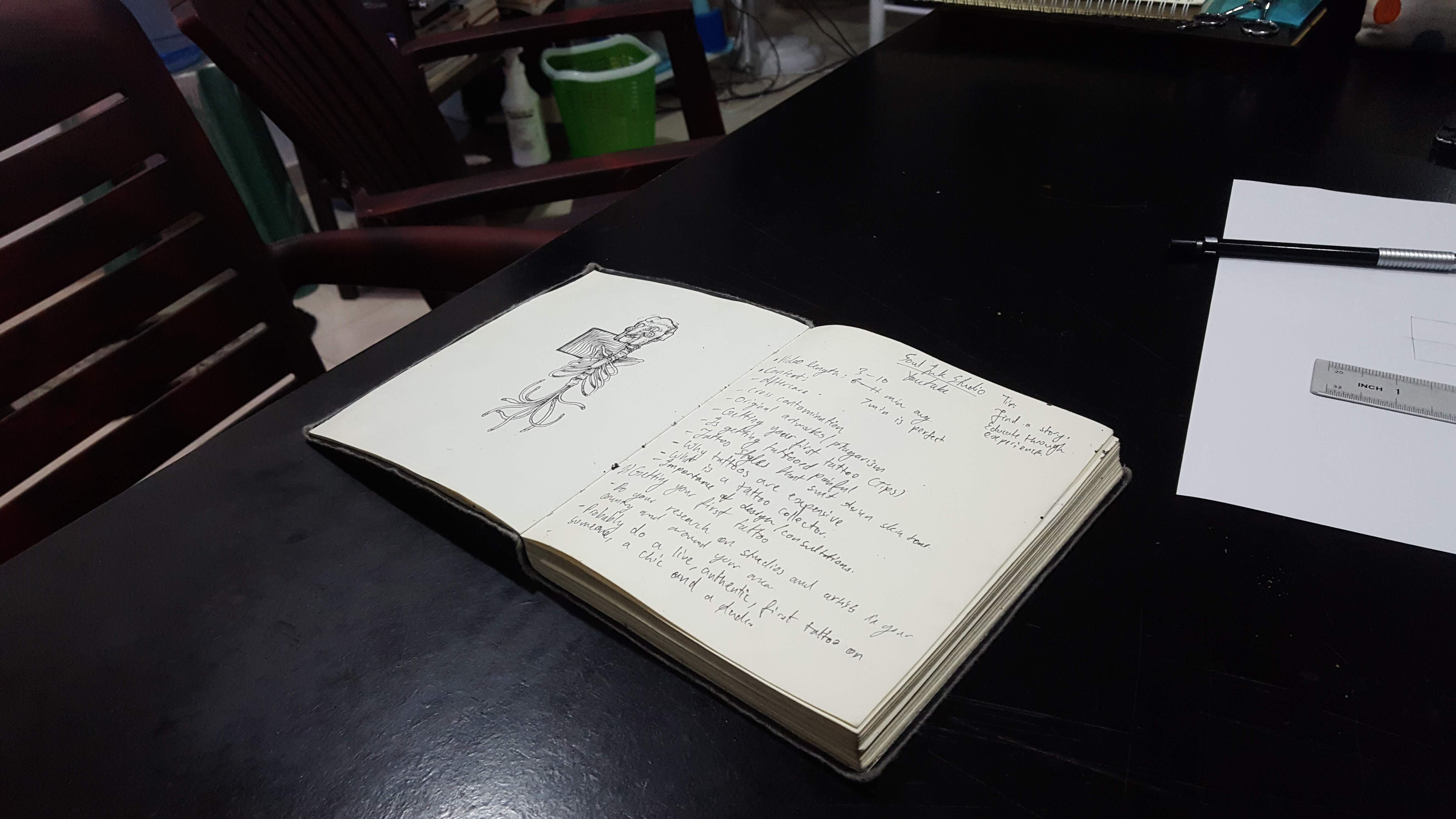
Apprenticeships
Traditional apprenticeships teach aspiring tattooists by having them shadow their mentors, and can last a few years. Students pick up techniques and become acquainted with tattooing logistics by spending time in the shop, and repay the studio by helping around. “In a traditional apprenticeship, you’re basically owned by the studio,” said Sampath-Valentine, currently in his second year of an apprenticeship at Soul Ink, Thimbirigasyaya. “You’re responsible for cleaning the studio from head-to-toe, odd jobs, and can’t even think about touching the tattoo machine.”
These apprenticeships can take three years or longer, according to Sampath-Valentine, and really help students develop their own styles. But in the past few years, Sri Lanka has seen the rise of quicker apprenticeships offered by larger studios. Students can sometimes pass through these in six months, but are expected to have their own styles honed and developed beforehand.
“We teach our apprentices about drawing techniques, hygiene, and how to run the shop,” said Nirmal Peiris, mentor to seven students at his Mount Lavinia studio, Tattoo Paradise, which offers faster-paced apprenticeships. “Hygiene is one of the most important parts of tattooing, and is probably our main focus.” According to Peiris, who has been tattooing for over a decade, keeping things clean isn’t hard to do, but requires remembering to keep a lot of things in order. “Ink cups, gloves, needles — there are many things to keep in mind,” he said. This isn’t only for the benefit of the client, either. “We wear gloves because there’s a lot of blood moving around, which gets into contact with our skin,” Peiris said.
For starters, tattooers have to know how to prep their work-stations. “Once I’ve started a six-hour job,” Peiris explained, “I can’t move around and touch things — that’ll ruin the hygiene protocol.” Most artists keep a portable table with tissues, gloves, needles, and an array of inks at hand. “Knowing what to put and what not to put on the table is important — I learnt it through example, by sitting in shop and seeing how Uditha [my mentor] did it.”
While a drawing style has to come to come from the artist, mentors can help refine commonly used techniques in tattooing, and provide a space for students to practice on paper, fake skin, and eventually the real thing. “When drawing a straight line, there’s a certain angle at which you should hold the machine,” Peiris told Roar Media. “We teach our apprentices techniques like this, but they have to work on their own designs and develop their own style.” According to Sampath-Valentine, “There are certain things you can and can’t do with tattoos. You can’t go into too much detail, because when it heals, it blurs. You have to think of how colour will show on a client’s skin, and things like that.”
Factors that don’t come into consideration when making orthodox art, like these, can only be exposed to an aspiring tattooist in the studio. Even with the rise in popularity of YouTube tutorial videos which, according to Peiris, can be very informative, there are certain things students can only learn in context. “When doing a tattoo in Sri Lanka you have to take into consideration not only our skin tones, but how the sun and sweat will wear a tattoo out over time,” he said.
That’s not to say online learning is futile. Peiris admits he keeps up-to-date with international styles and techniques mostly through YouTube nowadays. “With the internet, we have access to so many more styles,” he said. “Ten years ago, the tattoo scene in Sri Lanka was very different to how it is now, because we couldn’t see what tattoo artists in the US, UK, and India were doing.”
There is a lot in tattooing that artists have to get a feel for, which can’t explicitly be learned, but both Peiris and Sampath-Valentine stress the importance of apprenticeships to learn what can be taught. According to Sampath-Valentine: “A true professional will—at some point—go through an apprenticeship.”
But how do you start tattooing without being a part of this system? “Scratchers are people who buy machines and start tattooing,” Sampath-Valentine explained. “They haven’t been taught about proper hygiene, and haven’t taken the time to learn it.”
This contrasts from tattooists who are self-taught, like Peiris. “I first started learning through Googling tattoo styles,” he said. “Very quickly I realised I had to give hygiene more attention, for my safety as well as the client’s.” With online resources so abundant, Peiris says there is little excuse for self-learning tattoo artists not to acquaint themselves with proper hygiene protocols. To ensure these protocols are followed, and that artists are well-versed in inking skin, however, apprenticeships offer clients and studios a qualification with which to glean how learned their artist is.
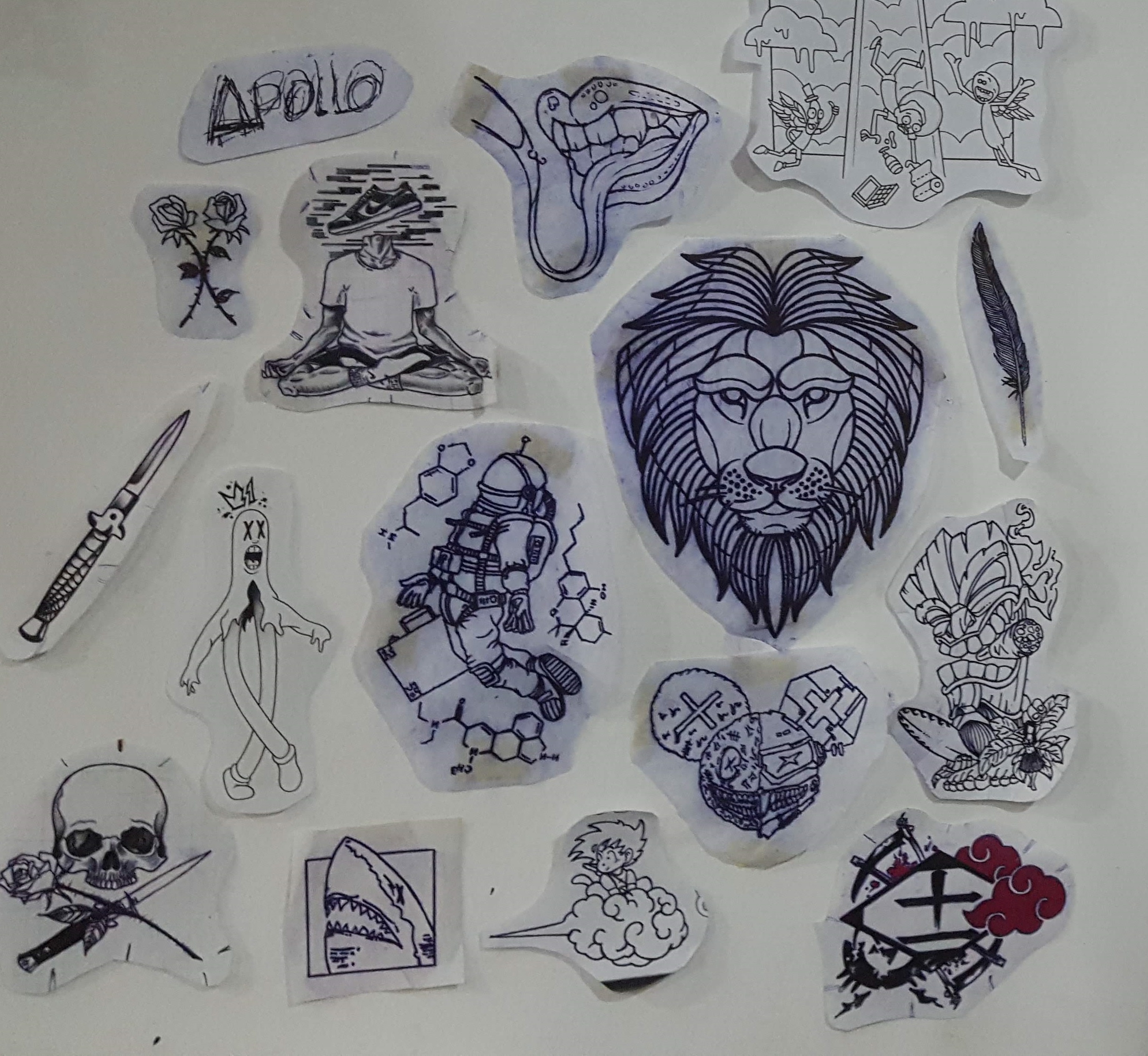
Tattoos In The Future
The slow, but visible, shift from casual, more traditional apprenticeships to formal, organised ones parallels the industry’s evolution from informal artists with home-studios to licensed and regulated businesses.
While this can result in more expensive tattoos, Peiris claims you get what you pay for. “Clients will come and spend a lot of money for a tattoo here,” he said. “But they can get the same tattoo from someone off the street for much cheaper — so what’s the value of the tattoo? It’s important that customers know they are paying for hygiene and a tattoo artist that has gone through some form of training.”
In this more regulated future there is still room, claims Peiris, for artistry and casual tattooing. “Even if you only work for friends or from home, you can still maintain a good hygiene level and it’s important that all tattoo artists do this,” he said. “Tattooing in Sri Lanka is moving towards licensing and a more official type of studio,” Sampath-Valentine said. “This is great, but it’s important to not lose the creative, artistic side of the industry in the process.”
Tattoo conventions are a way of working towards this balance. “At tattoo festivals and shows,” Peiris said, “artists who are qualified and well-established get a chance to compete and experiment with new styles of tattoos.”
This keeps artists on their toes and stops them from becoming too comfortable with their art. “Once an artist only sticks to their comfort zone, they become sloppy and old-fashioned,” Sampath-Valentine said. “In tattooing you have to stay up-to-date.” According to Peiris, “Sri Lanka is keeping up with international styles, but we need artists to try new things and new styles.”
Looking at the types of tattoos on offer today, it’s easy to see how the art has changed dramatically over the last few decades. “Ten years ago there were only a few styles of tattoo on offer — Japanese, Mauri, or tribal,” Peiris explained. “Now we have cartoons, realistic, hyper-realistic, trash-polka, and the old styles like tribal have changed completely.” Festivals and competitions are a great way of making sure local artists keep up with the ever-changing international landscape of styles.
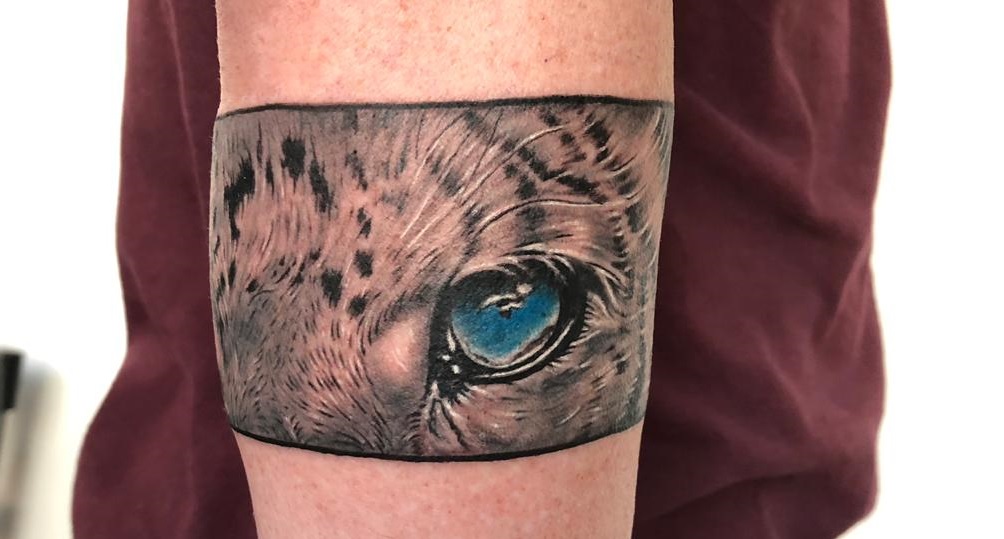
Events like these also work to break misconceptions of the art in the eyes of the public. “There is a stigma [in Sri Lanka], that as a tattoo artist you do drugs, you’re crazy, you don’t do proper work, and that you’re a thug,” Sampath-Valentine told Roar Media. “We need to change the mindset here.” Conventions give people without tattoos the chance to see one being done, and are a window to the diversity of designs people have on their bodies.
Pushing for recognition on a governmental level is in the works too, claims Peiris. “We have a Sri Lankan tattoo association,” he said. “We’re speaking with the government on introducing licenses for tattoo artists.” This will help give trained artists the credit they deserve, and will help ensure tattooing in the country is as safe as it can be. “Tattoos age as people do,” Sampath-Valentine remarked. “Let’s hope the industry can keep up.”



